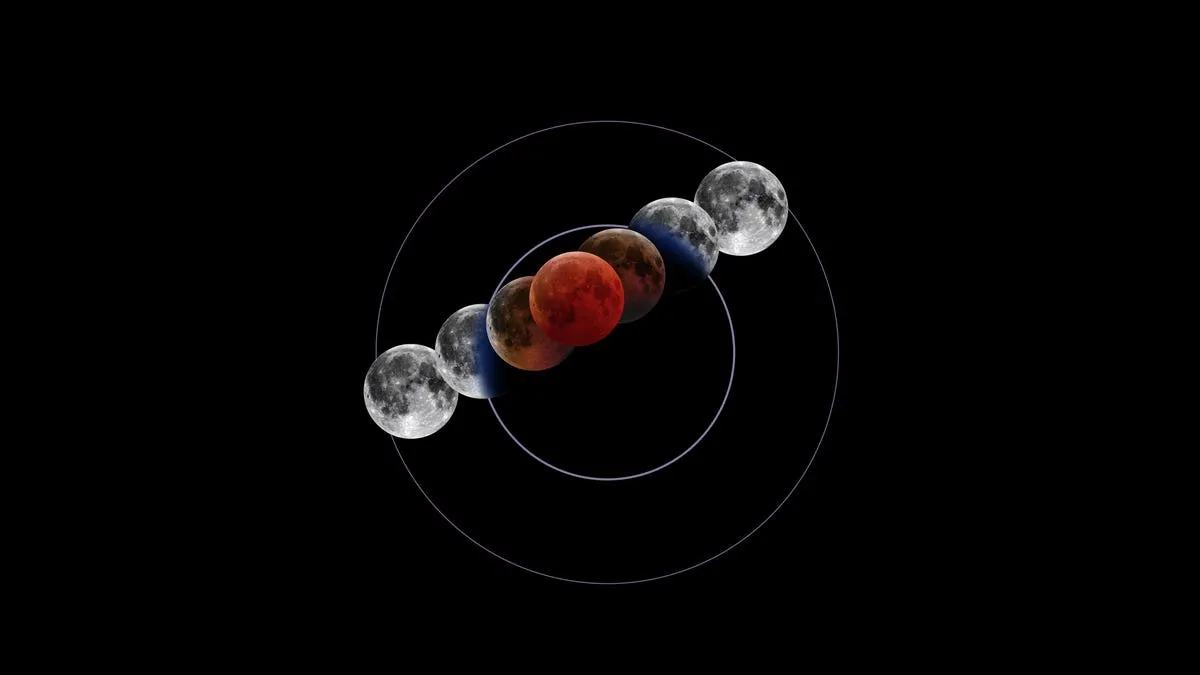
A stunning blood moon total lunar eclipse is set to grace the night sky late Thursday, as confirmed by astronomers. This celestial event will transform the moon into deep shades of rusty-red during the more than hour-long totality, offering an extraordinary sight for skywatchers. According to NASA, this will be the last total lunar eclipse observable in the U.S. until March 2026, making it a must-see event for astronomy enthusiasts.
Total lunar eclipses are commonly referred to as blood moons due to the moon's tendency to take on a reddish hue when it is obscured by the Earth's shadow. This phenomenon occurs when the Earth perfectly aligns itself between the moon and the sun, resulting in the moon appearing darker as the sunlight is blocked. Interestingly, only the light refracted through Earth's atmosphere reaches the moon, giving it that characteristic reddish tint, reminiscent of sunsets and sunrises.
The upcoming total lunar eclipse will be visible across several regions, including North America, South America, western parts of Europe, and Africa on the night of March 13-14. If you reside in the U.S. or elsewhere in North America, you can catch a glimpse of this stunning event starting at 12:55 a.m. ET. Don’t miss your chance to witness this breathtaking celestial display!
During the total lunar eclipse, the moon will traverse the Earth’s shadow, known as the umbra. At the center of the umbra, 100% of the moon's face will be covered by the Earth's shadow. The entire process can take up to 3 hours and 38 minutes as the moon first enters the penumbra—the lighter outer shadow—before moving into the umbra, which is the deepest part of the shadow. The totality phase, where the moon is completely shrouded in the Earth’s shadow, is expected to last approximately 65 minutes.
If you happen to miss this lunar eclipse, fear not! Our astronomical alignments are set to improve in the coming years. From 2025 to 2030, there will be a total of 14 lunar eclipses, with nine of them visible in the U.S., according to NASA. So, there will be ample opportunities to witness the magic of lunar eclipses in the near future.
This article was updated to include the latest information from contributing writers Doyle Rice and Brandon Girod of the USA TODAY NETWORK.